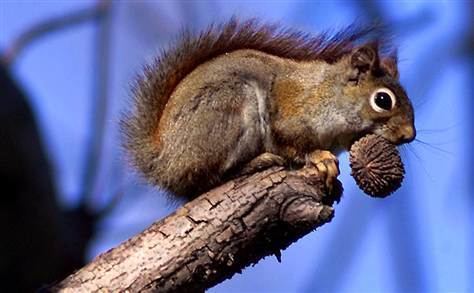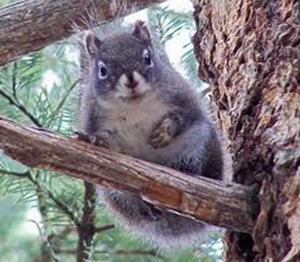Genus Tamiasciurus Rank Subspecies | Phylum Chordata Family Sciuridae Higher classification American red squirrel | |
 | ||
Scientific name Tamiasciurus hudsonicus grahamensis Similar Squirrel, American red squirrel, Pine squirrel, Mammal, Abert's squirrel | ||
An update on the endangered mount graham red squirrel
The Mount Graham red squirrel (Tamiasciurus hudsonicus grahamensis) is an endangered subspecies of the American red squirrel (Tamiasciurus hudsonicus) native to the Pinaleño Mountains of Arizona. It is smaller than most other subspecies of red squirrel, and also does not have the white-fringed tail that is common to the species. Its diet consists mainly of mixed seeds, conifer cones and air-dried fungi. It exhibits similar behavior to other squirrels in its species.
Contents

Physical

The Mount Graham red squirrel is a generally tiny squirrel weighing on average around 8 ounces (230 g) and measuring about 8 inches (20 cm) in length. The subspecies also has a 6 inches (15 cm) tail. Unlike most other squirrels in its species, the squirrels do not have a white-fringed tail. Both females and males share similar markings and features and are typically grayish brown in color with rusty yellow or orange markings on their backside. During the winter season the squirrels ears are tufted with fur, and during the summer a black lateral line is observed on the squirrel. The skull of the subspecies is rounded and its teeth are low-crowned.
Behavior

Mount Graham red squirrels behave in a manner similar to most other subspecies of American red squirrel. They are diurnal and do not hibernate during the winter months, but instead carry out activities in the mid-day sun. Mount Graham squirrels usually eat a diet of mixed seeds, conifer cones and air-dried fungi.
Habitat

Historically, the Mount Graham red squirrel inhabited about 11,750 acres (47.6 km2) of spruce-fir, mixed-conifer and ecotone zone habitats that were generally at higher elevations throughout the Pinaleño Mountains. Recent data shows that it occurs more frequently at the ecotone zone than the other habitats. When choosing a potential nesting site, the squirrels typically pick a cool, moist area with an abundance of food sources. Drought, forest fires, and insect infestation have been responsible for a decrease of the squirrel in the spruce-fir habitat.
Conservation

The Mount Graham subspecies was believed to be extinct in the 1950s, but was "rediscovered" in the 1970s. After its rediscovery, it was suggested for threatened or endangered species status under the Endangered Species Act in 1982. On May 21, 1986, the subspecies was officially recommended to become an endangered species, and on June 3, 1987, was officially listed as endangered. The Mount Graham International Observatory was controversial when it was built in the squirrel's habitat; the observatory has been required to monitor the community near the observatory to determine if its construction is having any negative effects on the population. Habitat loss is also occurring at high levels for a variety of natural and anthropogenic reasons. In 1988, the U.S. Fish and Wildlife Service designated most of this area as a refuge, and access to the area is only granted with a special permit.
